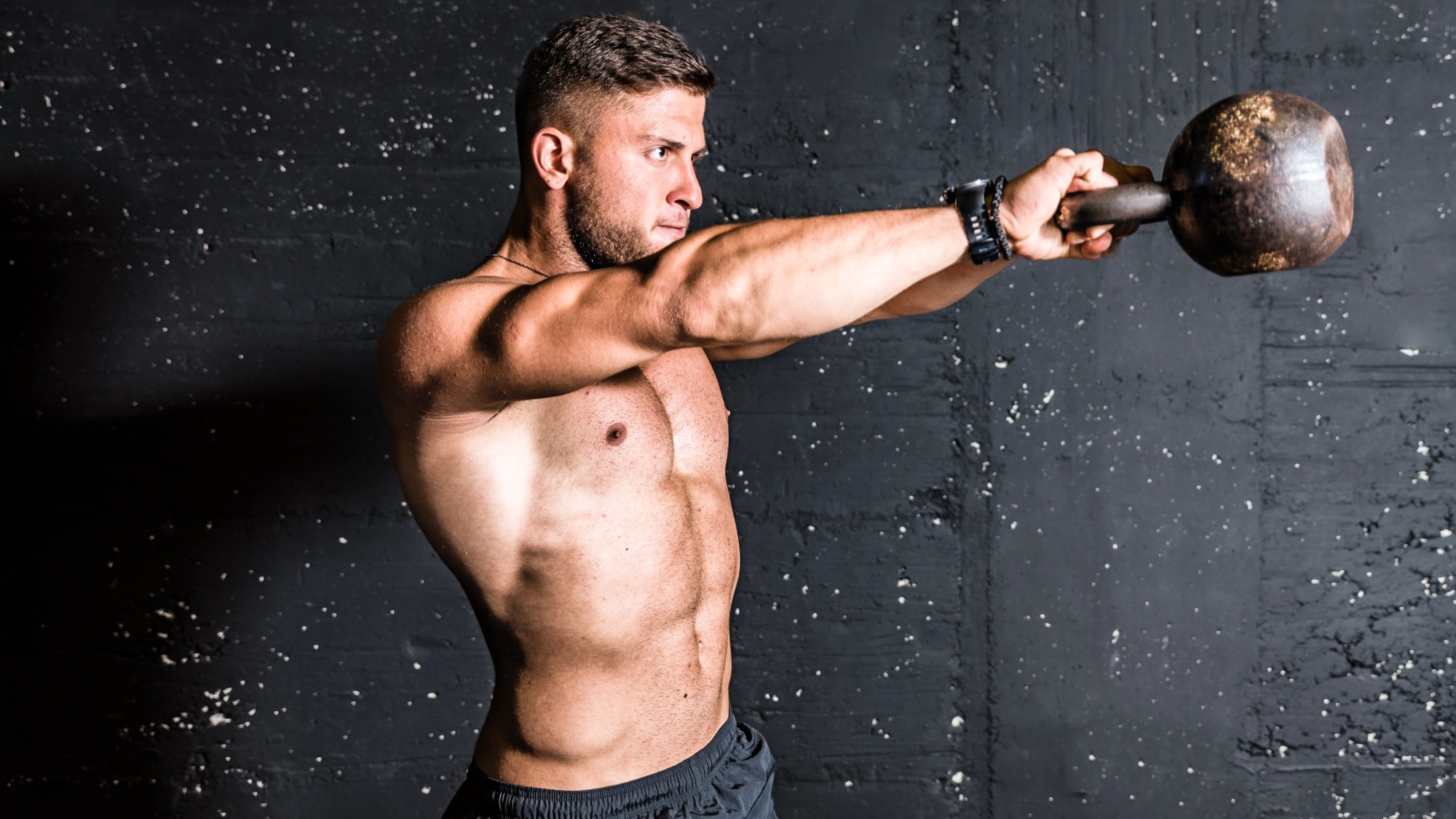Kickstand kettlebell swings, also known as staggered stance kettlebell swings, are a brilliant way to mix up your swing style using one key difference — your foot stance.To do kickstand swings, I recommend grabbing one of the best kettlebells for weightlifting. Position one foot slightly to the side and back from your opposing foot, then lift the heel to rest on the ball of the foot.
You can do this variation single-arm, dual, or alternating, giving you plenty of wiggle room to play around and get creative.I love adding this simple exercise to my kettlebell workouts, and below, I demonstrate how you can do it step-by-step, plus some benefits.How to do staggered stance kettlebell swingsI recommend practicing how to do kettlebell swings first, developing your strength and form with the OG swing style.

Next, check out the video and instructions below for a more challenging kettlebell swing variation.Stand with your feet shoulder-width apart and place one kettlebell between your feetStep your left foot slightly to the side and behind your right foot, then raise your left heel and rest on the ball of your footHinge at the hips while keeping a soft bend in your knees and grip the kettlebell with your right hand. You can use the overhand grip, but I prefer a neutral grip (palm facing left foot)Maintain a flat back with your shoulders pulled back and engage your coreSwing the kettlebell between your legs, then drive the weight upward with a soft bend in the elbow.
Aim to reach eyelineControl the descent of the weight between your legs and repeat for repsSwitch sidesWhat are the benefits of staggered stance kettlebell swings?The shift in foot position and balance allows you to focus more on one side at a time, and kettlebell swings, in general, are great for posterior chain development, targeting the lower back, glutes and hamstrings using a strong hip hinge.Alongside the posterior focus, swings engage the upper body, including your core muscles, arms and shoulders. However, your arms should never drive the exercise — always aim to reinforce the hip hinge.
As you drive your hips forward, squeeze your glutes and power through your core to send the weight upward.(Image credit: Shutterstock)Whatever the kettlebell swing variation, the exercise develops explosive power and tests muscular control, endurance and stability. However, if you’re new to the exercise, I recommend choosing a light kettlebell and building weight as you gain confidence in your technique and strength.
A common mistake I see with the kickstand swing is a tendency to turn the hips to one side and twist through the torso. Try to keep your hips square and face forward throughout. Avoid rotating your body and instead focus on consistently reinforcing the hinge and centering the movement through the powerhouse muscles that are your core.
More from Tom's GuideForget the gym — boost your metabolism and build full-body strength with this 7-move kettlebell workoutI did 90 American kettlebell swings a day for a week, here's what happenedI did 90 lateral kettlebell swings every day for a week, here's what happened.
Technology

Forget kettlebell swings — try kickstand swings to build a strong core and legs instead

Personal trainer shares how to do the kickstand kettlebell swing, the benefits and how the swing variation can build stronger leg and core muscles.















